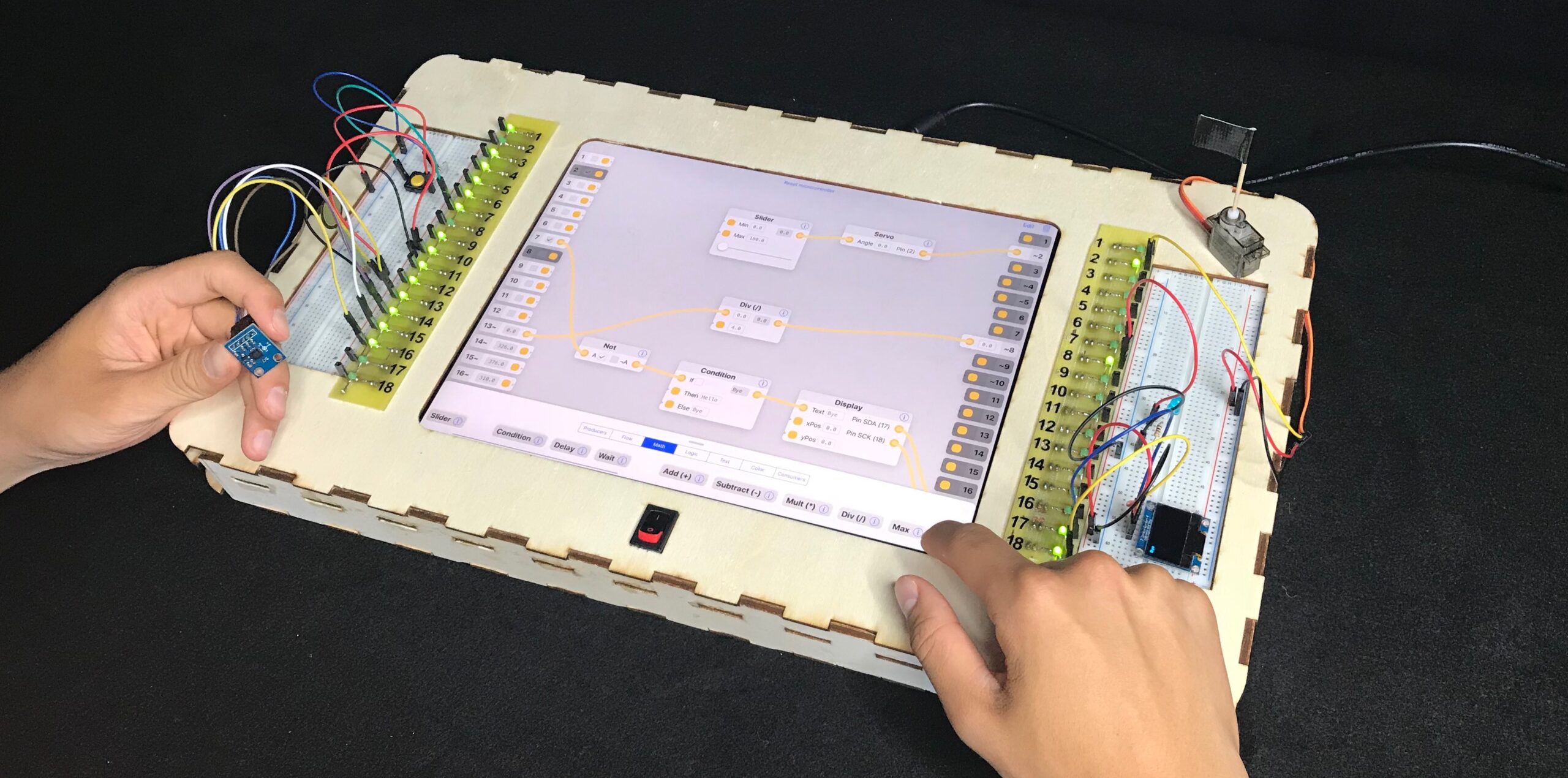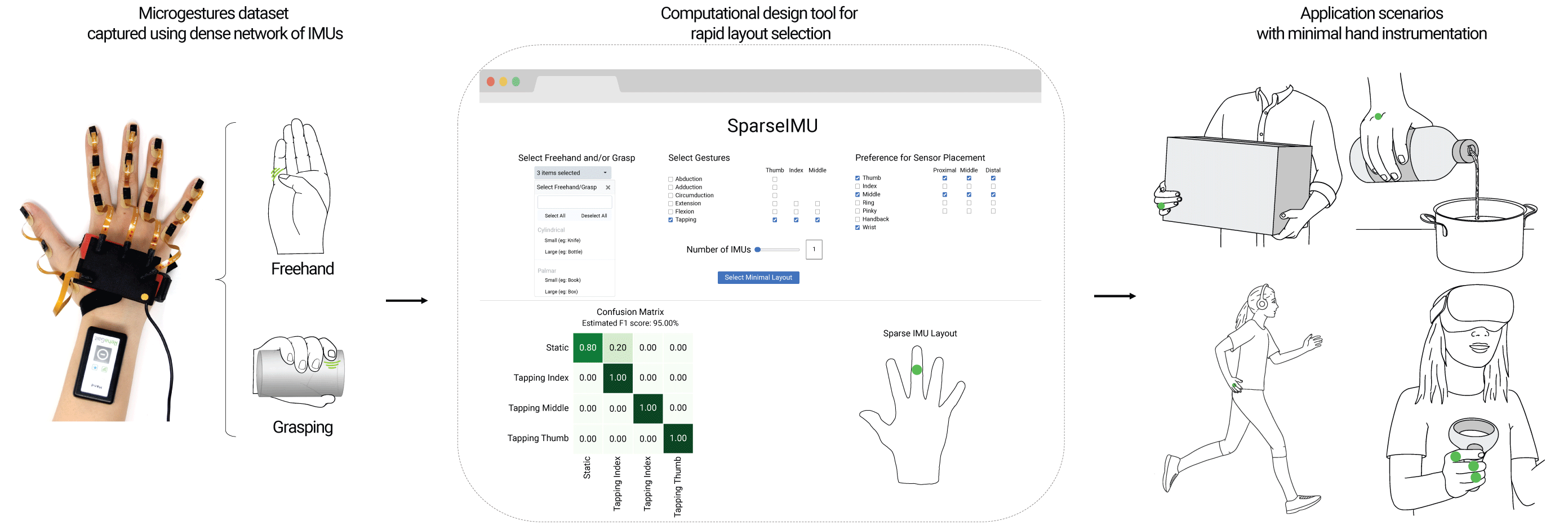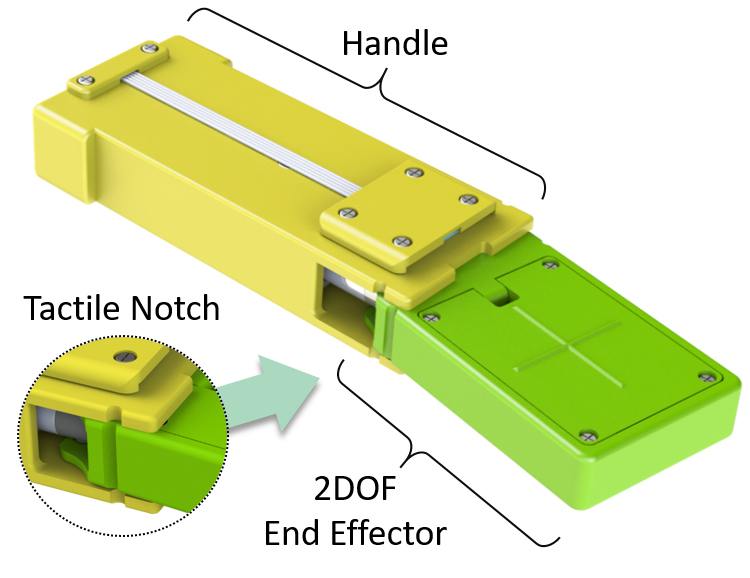We curated a list of this year’s publications — including links to social media, lab websites, and supplemental material. We have six journal articles, 67 full papers, 30 LBWs, eleven interactivities, one alt.chi paper, one DC paper, lead three workshops and give two courses. Four papers were awarded a best paper award, and seven papers received an honourable mention.
The papers for the contributing labs were also curated in a PDF booklet by Michael Chamunorwa, and it can be downloaded here: Booklet 2023
Your publication is missing? Send us an email: contact@germanhci.de
“Nah, it’s just annoying!” A Deep Dive into User Perceptions of Two-Factor Authentication
Karola Marky (Ruhr-University Bochum, University of Glasgow), Kirill Ragozin (Keio University), George Chernyshov (Keio University), Andrii Matviienko (Technical University of Darmstadt), Martin Schmitz (Saarland University), Max Mühlhäuser (Technical University of Darmstadt), Chloe Eghtebas (TUM), Kai Kunze (Keio University)
Abstract | Tags: Journal | Links:
@article{Marky2023Nah,
title = {“Nah, it’s just annoying!” A Deep Dive into User Perceptions of Two-Factor Authentication},
author = {Karola Marky (Ruhr-University Bochum, University of Glasgow), Kirill Ragozin (Keio University), George Chernyshov (Keio University), Andrii Matviienko (Technical University of Darmstadt), Martin Schmitz (Saarland University), Max Mühlhäuser (Technical University of Darmstadt), Chloe Eghtebas (TUM), Kai Kunze (Keio University)},
url = {https://casa.rub.de/ueber-casa/team, Website},
doi = {10.1145/3503514},
year = {2023},
date = {2023-04-28},
urldate = {2023-04-28},
abstract = {Two-factor authentication (2FA) is a recommended or imposed authentication mechanism for valuable online assets. However, 2FA mechanisms usually exhibit user experience issues that create user friction and even lead to poor acceptance, hampering the wider spread of 2FA. In this article, we investigate user perceptions of 2FA through in-depth interviews with 42 participants, revealing key requirements that are not well met today despite recently emerged 2FA solutions. First, we investigate past experiences with authentication mechanisms emphasizing problems and aspects that hamper good user experience. Second, we investigate the different authentication factors more closely. Our results reveal particularly interesting preferences regarding the authentication factor “ownership” in terms of properties, physical realizations, and interaction. These findings suggest a path toward 2FA mechanisms with considerably better user experience, promising to improve the acceptance and hence, the proliferation of 2FA for the benefit of security in the digital world.},
keywords = {Journal},
pubstate = {published},
tppubtype = {article}
}
Flowboard: How Seamless, Live, Flow-Based Programming Impacts Learning to Code for Embedded Electronics
Anke Brocker (RWTH Aachen University), René Schäfer (RWTH Aachen University), Christian Remy (Lancaster University), Simon Voelker (RWTH Aachen University), Jan Borchers (RWTH Aachen University)
Abstract | Tags: Journal | Links:
@article{Brocker2023Flowboard,
title = {Flowboard: How Seamless, Live, Flow-Based Programming Impacts Learning to Code for Embedded Electronics},
author = {Anke Brocker (RWTH Aachen University), René Schäfer (RWTH Aachen University), Christian Remy (Lancaster University), Simon Voelker (RWTH Aachen University), Jan Borchers (RWTH Aachen University)
},
url = {https://hci.rwth-aachen.de, Website
https://youtu.be/9AoHFA58khY, Full Video},
doi = {10.1145/3533015},
year = {2023},
date = {2023-04-28},
urldate = {2023-04-28},
abstract = {Toolkits like the Arduino system have brought embedded programming to STEM education. However, learning embedded programming is still hard, requiring an understanding of coding, electronics, and how both sides interact. To investigate the opportunities of using a different programming paradigm than the imperative approach to learning embedded coding, we developed Flowboard.
Students code in a visual iPad editor using flow-based programming, which is conceptually closer to circuit diagrams than imperative code. Two breadboards with I/O pins mirrored on the iPad connect electronics and program graph more seamlessly than existing IDEs. Program changes take effect immediately. This liveness reflects circuit behavior better than edit-compile-run loops. A first study confirmed that students can solve basic embedded programming tasks with Flowboard while highlighting important differences to a typical imperative IDE, Ardublock. A second, in-depth study provided qualitative insights into Flowboard's impact on students' conceptual models of electronics and embedded programming and exploring those.},
keywords = {Journal},
pubstate = {published},
tppubtype = {article}
}
Students code in a visual iPad editor using flow-based programming, which is conceptually closer to circuit diagrams than imperative code. Two breadboards with I/O pins mirrored on the iPad connect electronics and program graph more seamlessly than existing IDEs. Program changes take effect immediately. This liveness reflects circuit behavior better than edit-compile-run loops. A first study confirmed that students can solve basic embedded programming tasks with Flowboard while highlighting important differences to a typical imperative IDE, Ardublock. A second, in-depth study provided qualitative insights into Flowboard's impact on students' conceptual models of electronics and embedded programming and exploring those.

Linking Audience Physiology to Choreography
Jiawen Han (Keio University), George Chernyshov (Keio University), Moe Sugawa (Keio University), Dingding Zheng (Keio University), Danny Hynds (Keio University), Taichi Furukawa (Keio University), Marcelo Padovani (Keio University), Kouta Minamizawa (Keio University), Karola Marky (Ruhr-University Bochum), Jamie A Ward (Goldsmiths University of London), Kai Kunze (Keio University)
Abstract | Tags: Journal | Links:
@article{Han2023Choreography,
title = {Linking Audience Physiology to Choreography},
author = {Jiawen Han (Keio University), George Chernyshov (Keio University), Moe Sugawa (Keio University), Dingding Zheng (Keio University), Danny Hynds (Keio University), Taichi Furukawa (Keio University), Marcelo Padovani (Keio University), Kouta Minamizawa (Keio University), Karola Marky (Ruhr-University Bochum), Jamie A Ward (Goldsmiths University of London), Kai Kunze (Keio University)},
url = {https://casa.rub.de/ueber-casa/team, Website},
doi = {10.1145/3557887},
year = {2023},
date = {2023-04-28},
urldate = {2023-04-28},
abstract = {The use of wearable sensor technology opens up exciting avenues for both art and HCI research, providing new ways to explore the invisible link between audience and performer. To be effective, such work requires close collaboration between performers and researchers. In this paper, we report on the co-design process and research insights from our work integrating physiological sensing and live performance.} We explore the connection between the audience’s physiological data and their experience during the performance, analyzing a multi-modal dataset collected from 98 audience members. We identify notable moments based on HRV and EDA, and show how the audience's physiological responses can be linked to the choreography. The longitudinal changes in HRV features suggest a strong connection to the choreographer’s intended narrative arc, while EDA features appear to correspond with short-term audience responses to dramatic moments. We discuss the physiological phenomena and implications for designing feedback systems and interdisciplinary collaborations.},
keywords = {Journal},
pubstate = {published},
tppubtype = {article}
}
SparseIMU: Computational Design of Sparse IMU Layouts for Sensing Fine-Grained Finger Microgestures
Adwait Sharma (Saarland University, Saarland Informatics Campus, Germany), Christina Salchow-Hömmen (Department of Neurology, Charité-Universitätsmedizin Berlin, Germany & Control Systems Group, Technische Universität Berlin, Germany), Vimal Suresh Mollyn (Saarland University, Saarland Informatics Campus, Germany), Aditya Shekhar Nittala (Saarland University, Saarland Informatics Campus, Germany), Michael A. Hedderich (Saarland University, Saarland Informatics Campus, Germany), Marion Koelle (Saarland University, Saarland Informatics Campus, Germany), Thomas Seel (Control Systems Group, Technische Universität Berlin, Germany & Department of AI in Biomedical Engineering, FAU Erlangen-Nürnberg, Germany), Jürgen Steimle (Saarland University, Saarland Informatics Campus, Germany)
Abstract | Tags: Interactivity/Demonstration, Journal | Links:
@inproceedings{Sharma2023SparseIMU,
title = {SparseIMU: Computational Design of Sparse IMU Layouts for Sensing Fine-Grained Finger Microgestures},
author = {Adwait Sharma (Saarland University, Saarland Informatics Campus, Germany), Christina Salchow-Hömmen (Department of Neurology, Charité-Universitätsmedizin Berlin, Germany & Control Systems Group, Technische Universität Berlin, Germany), Vimal Suresh Mollyn (Saarland University, Saarland Informatics Campus, Germany), Aditya Shekhar Nittala (Saarland University, Saarland Informatics Campus, Germany), Michael A. Hedderich (Saarland University, Saarland Informatics Campus, Germany), Marion Koelle (Saarland University, Saarland Informatics Campus, Germany), Thomas Seel (Control Systems Group, Technische Universität Berlin, Germany & Department of AI in Biomedical Engineering, FAU Erlangen-Nürnberg, Germany), Jürgen Steimle (Saarland University, Saarland Informatics Campus, Germany)},
url = {https://hci.cs.uni-saarland.de/, Website
https://twitter.com/HCI_Saarland, twitter},
doi = {10.1145/3569894},
year = {2023},
date = {2023-04-28},
urldate = {2023-04-28},
publisher = {ACM},
abstract = {Gestural interaction with freehands and while grasping an everyday object enables always-available input. To sense such gestures, minimal instrumentation of the user's hand is desirable. However, the choice of an effective but minimal IMU layout remains challenging, due to the complexity of the multi-factorial space that comprises diverse finger gestures, objects and grasps. We present SparseIMU, a rapid method for selecting minimal inertial sensor-based layouts for effective gesture recognition. Furthermore, we contribute a computational tool to guide designers with optimal sensor placement. Our approach builds on an extensive microgestures dataset that we collected with a dense network of 17 inertial measurement units (IMUs). We performed a series of analyses, including an evaluation of the entire combinatorial space for freehand and grasping microgestures (393K layouts), and quantified the performance across different layout choices, revealing new gesture detection opportunities with IMUs. Finally, we demonstrate the versatility of our method with four scenarios.},
keywords = {Interactivity/Demonstration, Journal},
pubstate = {published},
tppubtype = {inproceedings}
}

The Placebo Effect of Artificial Intelligence in Human-Computer Interaction
Thomas Kosch (HU Berlin), Robin Welsch (Aalto University), Lewis Chuang (Technische Universität Chemnitz), Albrecht Schmidt (LMU Munich)
Abstract | Tags: Journal | Links:
@article{Kosch2023Placebo,
title = {The Placebo Effect of Artificial Intelligence in Human-Computer Interaction},
author = {Thomas Kosch (HU Berlin), Robin Welsch (Aalto University), Lewis Chuang (Technische Universität Chemnitz), Albrecht Schmidt (LMU Munich)},
url = {https://cognisens.group, Website},
doi = {10.1145/3529225},
year = {2023},
date = {2023-04-28},
urldate = {2023-04-28},
abstract = {In medicine, patients can obtain real benefits from a sham treatment. These benefits are known as the placebo effect. We report two experiments (Experiment I: N=369; Experiment II: N=100) demonstrating a placebo effect in adaptive interfaces. Participants were asked to solve word puzzles while being supported by no system or an adaptive AI interface. All participants experienced the same word puzzle difficulty and had no support from an AI throughout the experiments. Our results showed that the belief of receiving adaptive AI support increases expectations regarding the participant's own task performance, sustained after interaction. These expectations were positively correlated to performance, as indicated by the number of solved word puzzles. We integrate our findings into technological acceptance theories and discuss implications for the future assessment of AI-based user interfaces and novel technologies. We argue that system descriptions can elicit placebo effects through user expectations biasing the results of user-centered studies.},
keywords = {Journal},
pubstate = {published},
tppubtype = {article}
}
The S-BAN: Insights into the Perception of Shape-Changing Haptic Interfaces via Virtual Pedestrian Navigation
Adam Spiers (Imperial College London, Max Planck Institute for Intelligent Systems), Eric Young (Max Planck Institute for Intelligent Systems),, Katherine J. Kuchenbecker (Max Planck Institute for Intelligent Systems)
Abstract | Tags: Journal | Links:
@article{Spier2023SBAN,
title = {The S-BAN: Insights into the Perception of Shape-Changing Haptic Interfaces via Virtual Pedestrian Navigation},
author = {Adam Spiers (Imperial College London and Max Planck Institute for Intelligent Systems), Eric Young (Max Planck Institute for Intelligent Systems), and Katherine J. Kuchenbecker (Max Planck Institute for Intelligent Systems)},
url = {https://hi.is.mpg.de, Website},
doi = {10.1145/3555046},
year = {2023},
date = {2023-04-28},
urldate = {2023-04-28},
abstract = {Screen-based pedestrian navigation assistance can be distracting or inaccessible to users. Shape-changing haptic interfaces can overcome these concerns. The S-BAN is a new handheld haptic interface that utilizes a parallel kinematic structure to deliver 2-DOF spatial information over a continuous workspace, with a form factor suited to integration with other travel aids. The ability to pivot, extend and retract its body opens possibilities and questions around spatial data representation. We present a static study to understand user perception of absolute pose and relative motion for two spatial mappings, showing highest sensitivity to relative motions in the cardinal directions. We then present an embodied navigation experiment in virtual reality. User motion efficiency when guided by the S-BAN was statistically equivalent to using a vision-based tool (a smartphone proxy). Although haptic trials were slower than visual trials, participants' heads were more elevated with the S-BAN, allowing greater visual focus on the environment.},
keywords = {Journal},
pubstate = {published},
tppubtype = {article}
}
